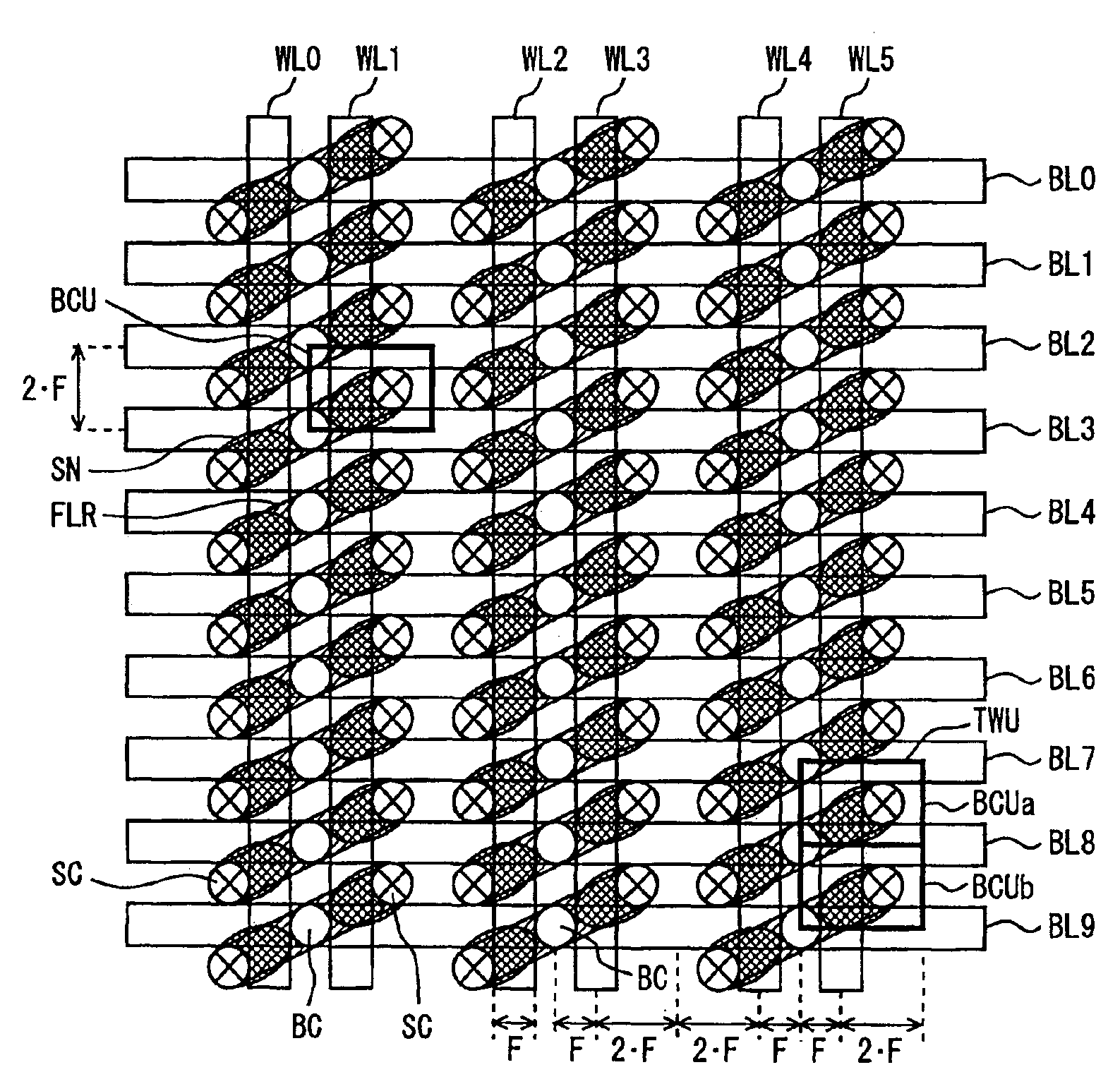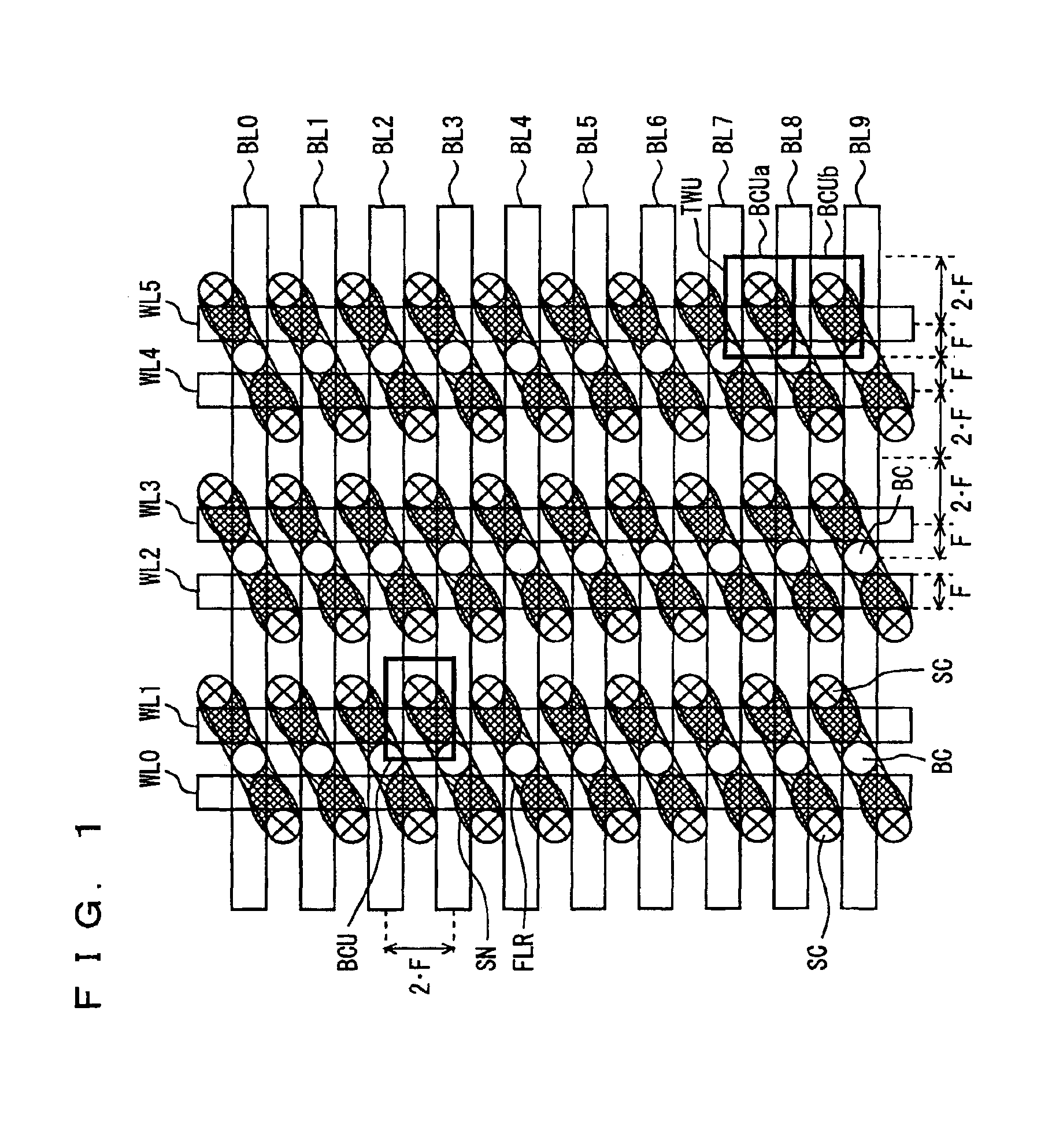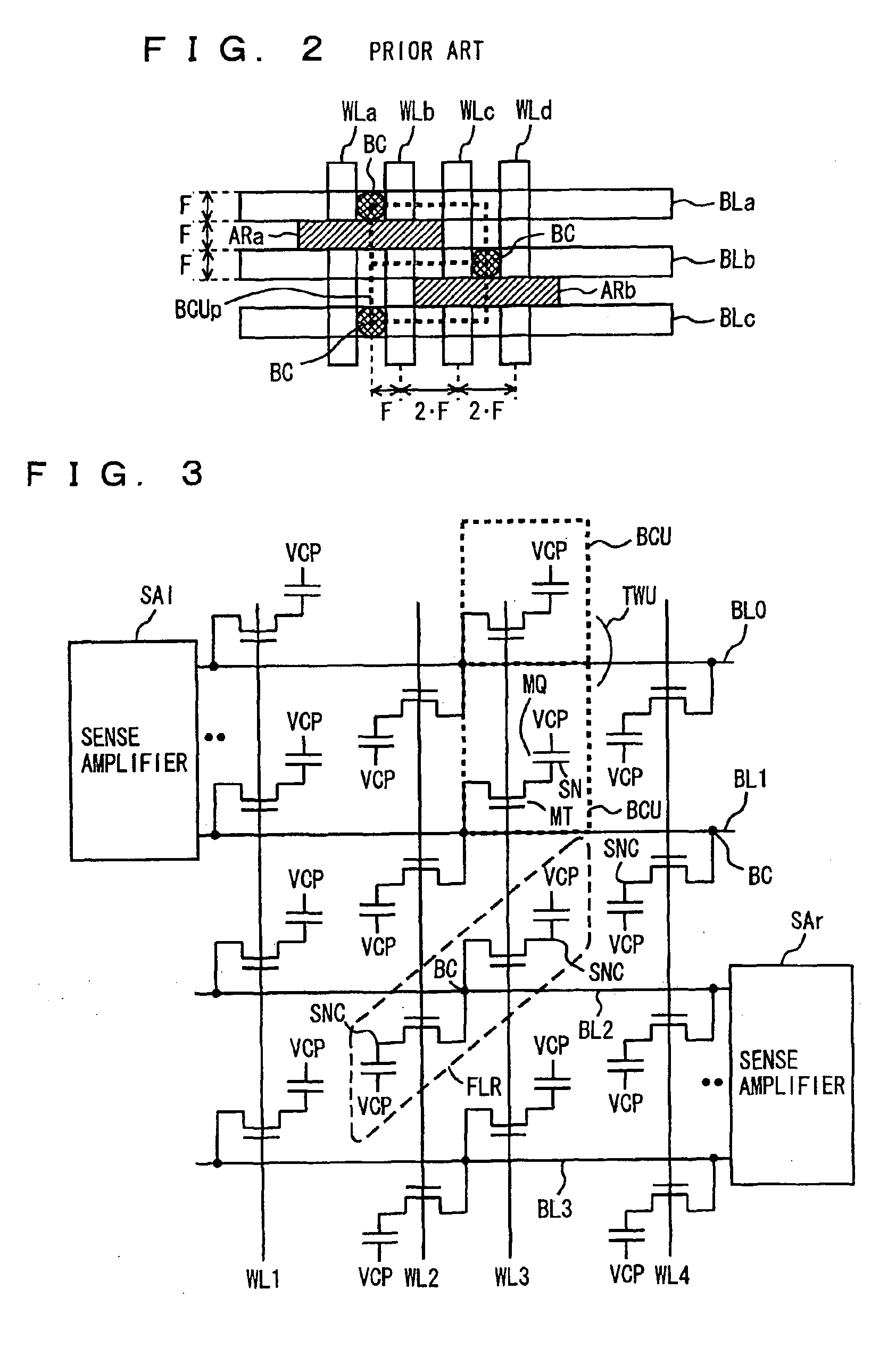Semiconductor memory device with memory cells arranged in high density
a memory cell and high density technology, applied in semiconductor devices, digital storage, instruments, etc., can solve the problems of inability to accurately perform sensing operations, storage data may be lost, and difficulty in accurate sensing operations, so as to reduce the active region of memory cells in the vertical and horizontal directions, reduce the layout area size of twin cells, and reduce the unit area of memory cells.
- Summary
- Abstract
- Description
- Claims
- Application Information
AI Technical Summary
Benefits of technology
Problems solved by technology
Method used
Image
Examples
first embodiment
FIG. 1 schematically shows a layout of a memory cell array portion in a semiconductor memory device in accordance with a first embodiment of the present invention. In FIG. 1, word lines WL0 to WL5 are arranged extending in a row direction, while bit lines BL0 to BL9 are arranged extending in a column direction. These word lines WL0 to WL5 and bit lines BL0 to BL9 are arranged crossing with each other in FIG. 1. Each of word lines WL0 to WL5 is made of, for example, a polysilicon interconnection line, while each of bit lines BL0 to BL9 is made of, for instance, a first metal interconnection line at an upper layer.
In a direction crossing word lines WL0 to WL5 and bit lines BL0 to BL9, an active region (a field region) FLR is provided. Two DRAM cells are formed in a single field region FLR.
A bit line contact BC is formed in a crossing portion of field region FLR and bit line BL (generically indicating BL0 to BL9).
In field region FLR, storage node contacts SCs are provided at ends oppos...
second embodiment
FIG. 5 schematically shows a layout of a memory array in a semiconductor memory device in accordance with a second embodiment of the present invention. The layout shown in FIG. 5 is different from the layout in FIG. 1 in the following point. Specifically, a dummy word line DWL (DWL0 to DWL3) is provided in a region between storage node contacts SCs formed in field regions adjacent in a column direction. In other words, dummy word line DWL is provided between word lines WLs arranged at a pitch of 4·F. The other portions of the layout shown in FIG. 5 are similar to those of the layout in FIG. 1. Thus, the same reference numerals are assigned to corresponding portions, and a detailed description thereof will not be repeated.
Dummy word line DWL is formed at the same interconnection line layer as word line WL, and is fabricated through the same manufacturing process as word line WL. Therefore, an additional process and mask are not required for the provision of dummy word line DWL.
A pitc...
third embodiment
FIG. 8 schematically shows a layout of a memory array portion in a semiconductor memory device in accordance with a third embodiment of the present invention. In the layout shown in FIG. 8, a field region FLRA is formed in a region below each of dummy word lines DWL0 to DWL3, and field regions FLRs are formed continuously. Thus, field regions FLRs of memory cells in adjacent rows and adjacent columns are formed continuously, and field regions FLRs are formed extending along one direction. Field region FLRA formed in a region below dummy word line DWL (DWL0 to DWL3) extends linearly in the column direction, and physically connect the field regions provided for opposite storage nodes with respect to the dummy word line.
A ground voltage or a negative voltage Vdm is applied to each of dummy word lines DWL0 to DWL3.
The other configurations in the layout shown in FIG. 8 are similar to those in the layout shown in FIG. 5. Thus, the same reference numerals are assigned to corresponding port...
PUM
 Login to View More
Login to View More Abstract
Description
Claims
Application Information
 Login to View More
Login to View More - R&D
- Intellectual Property
- Life Sciences
- Materials
- Tech Scout
- Unparalleled Data Quality
- Higher Quality Content
- 60% Fewer Hallucinations
Browse by: Latest US Patents, China's latest patents, Technical Efficacy Thesaurus, Application Domain, Technology Topic, Popular Technical Reports.
© 2025 PatSnap. All rights reserved.Legal|Privacy policy|Modern Slavery Act Transparency Statement|Sitemap|About US| Contact US: help@patsnap.com



